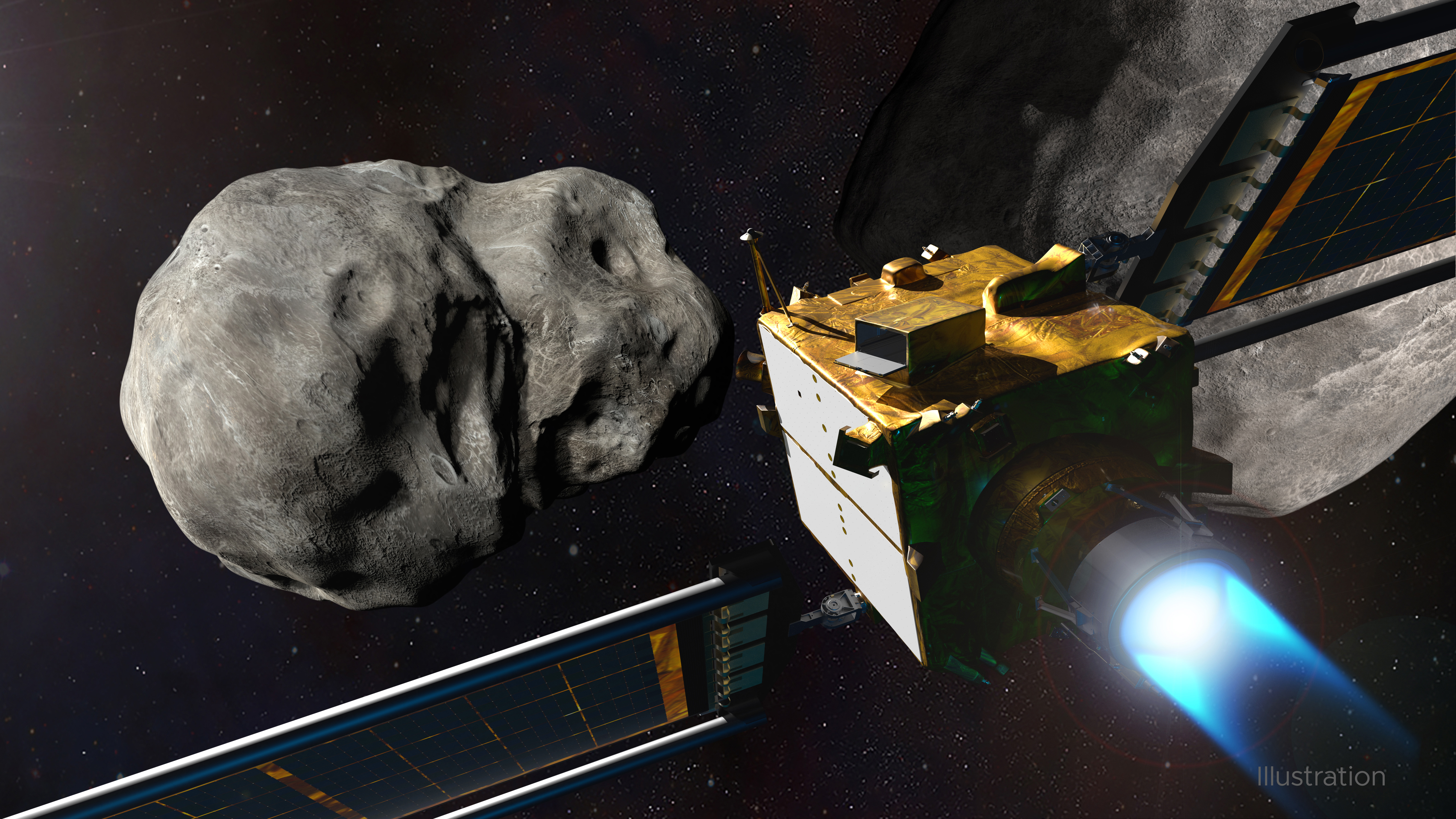Media release
From:
Springer Nature
Dimorphos may have been reshaped following DART impact
The asteroid moon Dimorphos may have been reshaped following the impact from NASA’s Double Asteroid Redirection Test (DART), according to a paper published in Nature Astronomy. This result indicates that Dimorphos is potentially a weak rubble pile made up of material shed from its asteroid Didymos.
The DART planetary defence demonstrator accomplished its mission on September 26, 2022, when it impacted Dimorphos, the moon of near-Earth asteroid Didymos, and shortened its orbital period around the asteroid by 33 minutes. DART has important planetary defence applications, but the spacecraft also provided information on the internal structure of asteroids and the effect of an impact on their properties.
Sabina Raducan and colleagues modelled the DART impact with a state-of-the-art shock physics code, using realistic constraints on Dimorphos’s mechanical and compositional properties informed by DART’s first results. The simulations that were the closest match to observations of the impact suggest that Dimorphos is weak with a cohesive strength similar to the asteroids Bennu and Ryugu and has a lack of large boulders on its surface. The authors suggest that Dimorphos may be a rubble pile formed from rotational shedding and re-accumulation of ejected material from Didymos. The model also indicates that the DART impact may not have produced an impact crater but could have reshaped the moon in its entirety — a process known as global deformation — and caused resurfacing of Dimorphos with material from its interior.
The authors conclude that their findings offer additional insights into the formation and characteristics of binary asteroids and may have implications for future explorations, such as ESA’s upcoming Hera mission, and asteroid deflection efforts.
Attachments
Note: Not all attachments are visible to the general public.
Research URLs will go live after the embargo ends.

Research
Springer Nature, Web page
The URL will go live after the embargo ends
Journal/
conference:
Nature Astronomy
Organisation/s:
University of Bern, Switzerland
Funder:
S.D.R. and M.J. acknowledge support from the Swiss National Science Foundation (Project No. 200021_207359). This
work was supported by the DART mission (NASA Contract No.
80MSFC20D0004). G.S.C. and T.M.D. acknowledge support
from the UK Science and Technology Facilities Council (Grant
No. ST/S000615/1). F.F. acknowledges funding from the Swiss
National Science Foundation (Ambizione Grant No. 193346).
Portions of this work by K.M.K., M.B.S. and J.M.O. were performed
at Lawrence Livermore National Laboratory (US Department of
Environment Contract No. DE-AC52-07NA27344 and Grant No.
LLNL-JRNL-846795). P.M. acknowledges financial support from
the French National Centre for Scientific Research through the
exploratory research programme of the Mission for Transversal
and Interdisciplinary Initiatives, from the European Space Agency
and from the University of Tokyo. P.M., R.L., K.W., N.M. and C.Q.R.
acknowledge support from the European Union’s Horizon 2020
research and innovation programme (Grant Agreement No. 870377
and Project NEO-MAPP). N.M., C.Q.R. and P.M. acknowledge funding
support from the French National Centre for Space Studies. R.N.
acknowledges support from Future Investigators in NASA Earth and
Space Science and Technology (NNH20ZDA001N/80NSSC21K1527).
E.D., E.M.E., P.H.H., S.I., A.L., M.P., A.R. and F.T. acknowledge financial
support from the Italian Space Agency (Contract No. 2019-31-HH.0).
M.P., A.L. and F.T. also acknowledge support from the Italian Space
Agency (Contract No. 2022-8-HH.0). Work by E.G.F. was carried out
at the Jet Propulsion Laboratory, California Institute of Technology,
under a contract with NASA (Grant No. 80NM0018D0004). J.O.
acknowledges support from the Spanish Ministry for Science and
Innovation and the Spanish Research Agency (Grant No. PID2021-
125883NB-C22, Project 10.13039/501100011033) and from the
European Regional Development Fund under the project A way
of making Europe. J.O., I.H., S.R., M.J., R.L. and K.W. acknowledge
support from the Spanish National Research Council (Project
ILINK22061). The work by P.P. was supported by the Grant Agency of
the Czech Republic (Grant No. 20-04431S).



 International
International



